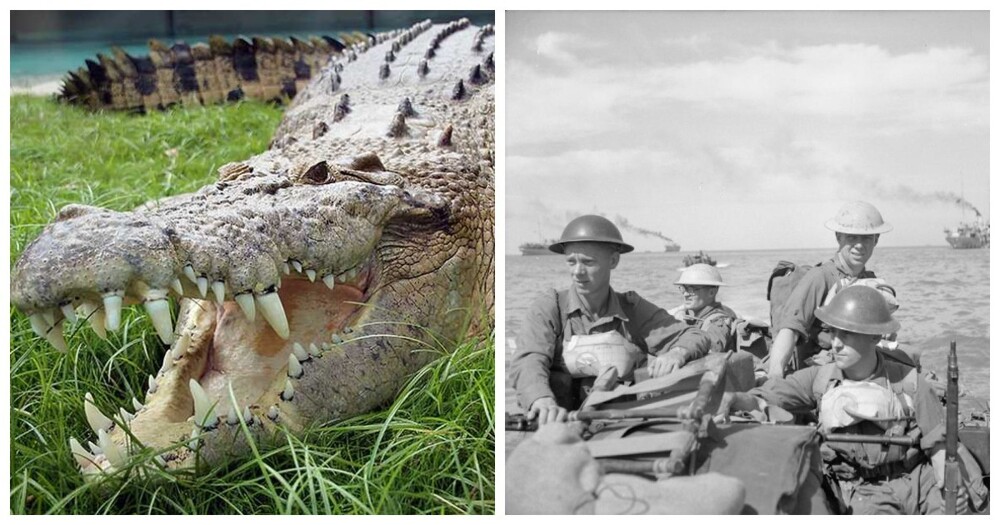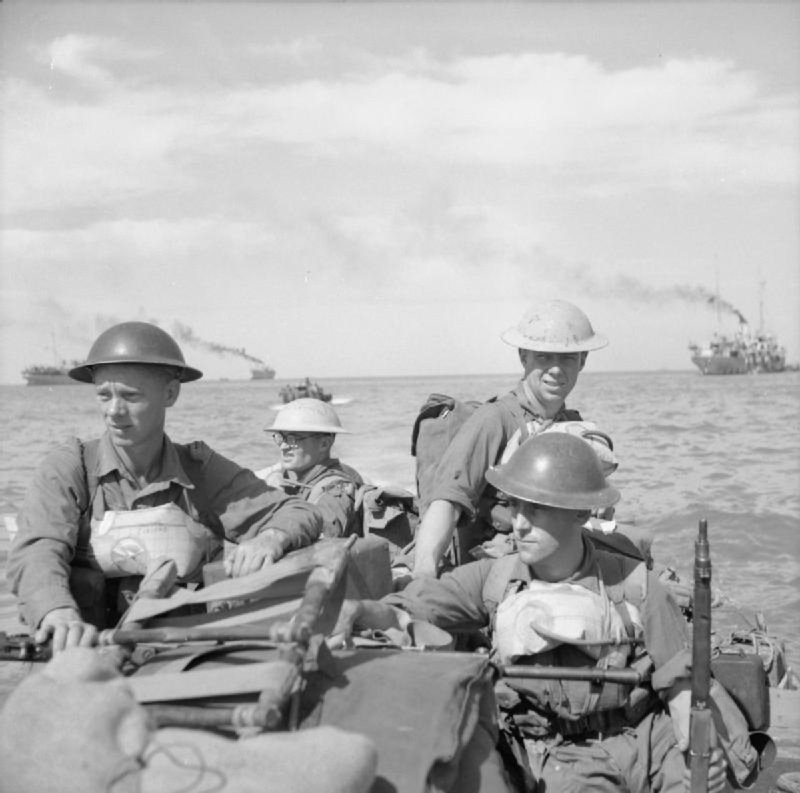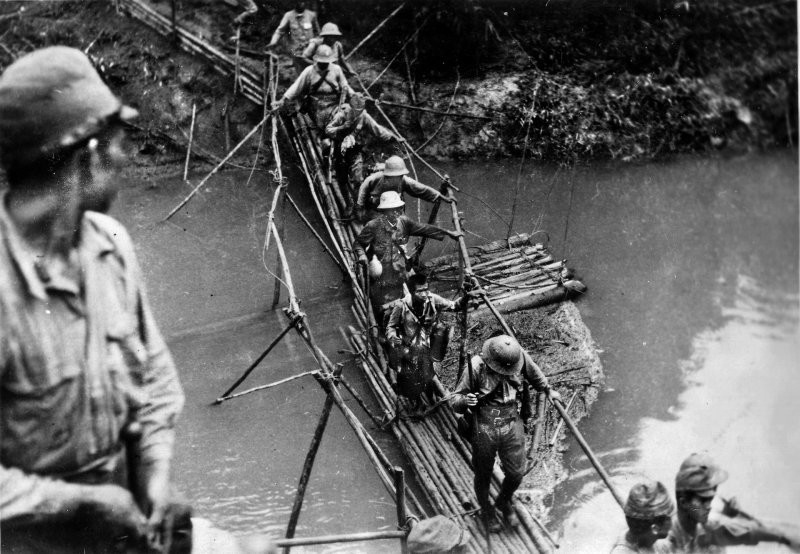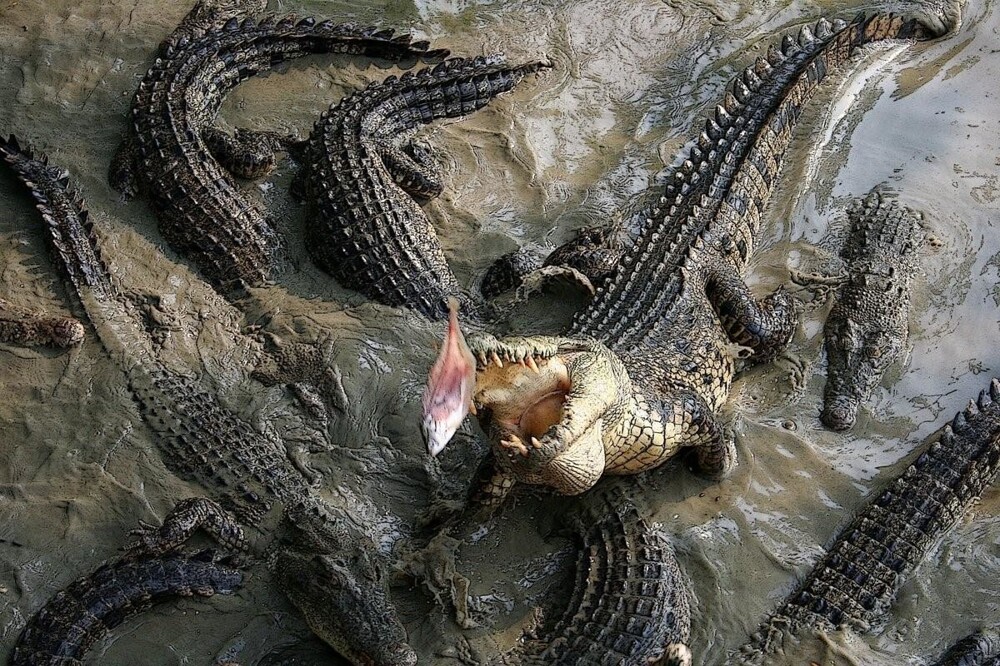Tragedy on Ramri: the most massive attack of crocodiles or an established fake? (8 photos)
The cries of despair and pain on the night of February 19, 1945 were interrupted only by the quiet methodical movement of the jaws. On Ramri Island, the largest island on the entire Rakhine coast and in Myanmar, about 1,000 people died. A painful and terrible death. 
The Second World War was coming to an end. But the Japanese continued to conduct active military operations in Southeast Asia. In January, British and Indian troops landed ashore. The military planned to create an air base on Ramri, but did not know that there were about a thousand Japanese soldiers on the island - the 121st Sabotage Corps. 
British troops landing on the shores of Ramree Island, 21 January 1945
The forces were unequal, and soon the Japanese found themselves surrounded. The proud people refused to give up and slowly retreated into the very depths of the island. Suffering from insect bites, reptiles, dying from wounds, thirst and hunger.
To escape from the ring, the Japanese had to overcome about 15 kilometers of mangrove swamps. At least, this is what an eyewitness to those events, Canadian naturalist Bruce Wright, said. According to his version, out of a thousand soldiers, only a couple dozen remained alive. The rest met a painful death in the jaws of the saltwater crocodiles that abounded in the quagmire. 
Japanese troops cross a river in Burma on a rickety bridge. The Japanese were well trained in jungle warfare and endured harsh conditions during their advance into Burma
As night fell, the British, who were observing from the hill, were horrified by what was happening. Fanged reptiles dragged people into the muddy slurry. Screams were heard here and there. And when comrades rushed to help the fallen man, they suffered the same fate. As a result, out of 1215 experienced, well-trained, fearless fighters, less than 20 remained alive. The British safely captured the remaining enemies. But even for interrogation they turned out to be unsuitable - they were in such a deep state of shock.
Fact or fable? 
Saltwater crocodile
So the crocodiles, without knowing it, helped the British army. And the incident was included in the Guinness Book of Records. But in modern realities, more and more researchers began to show skepticism towards this bloody story. Thus, the British historian, biographer and journalist Frank McLynn, in his work, the topic of which is precisely the Burma campaign, questions Wright's story. Since no documentary evidence of his stay on the island during the specified period of time has been preserved. 
Bruce Wright
In addition, it is difficult to believe that there are such a huge number of crocodiles in the swamps. After all, they need food, which in those conditions simply was not available in the required quantity. They didn’t devour the Japanese every day, did they?
Plus, neither in the reports of the British military, nor in the memoirs of the few surviving Japanese there are any marks or mentions of a massive attack by crocodiles. 
Frank McLynn
In 2016, Dr. Sam Willis visited the island. He also studied the archives and came to the conclusion that if there were victims, their number was clearly exaggerated. A year later, a documentary film was made based on the National Geographic investigation. After its release, the island again entered the Book of Records as the site of the largest massacre of people by crocodiles. 
Funny Photoshop
Representatives of the publication commented on the decision by saying that they had no reason not to trust the naturalist’s recollections. But if new documented evidence is provided, the decision will certainly be revised. 
Did the crocodile massacre really happen?





















